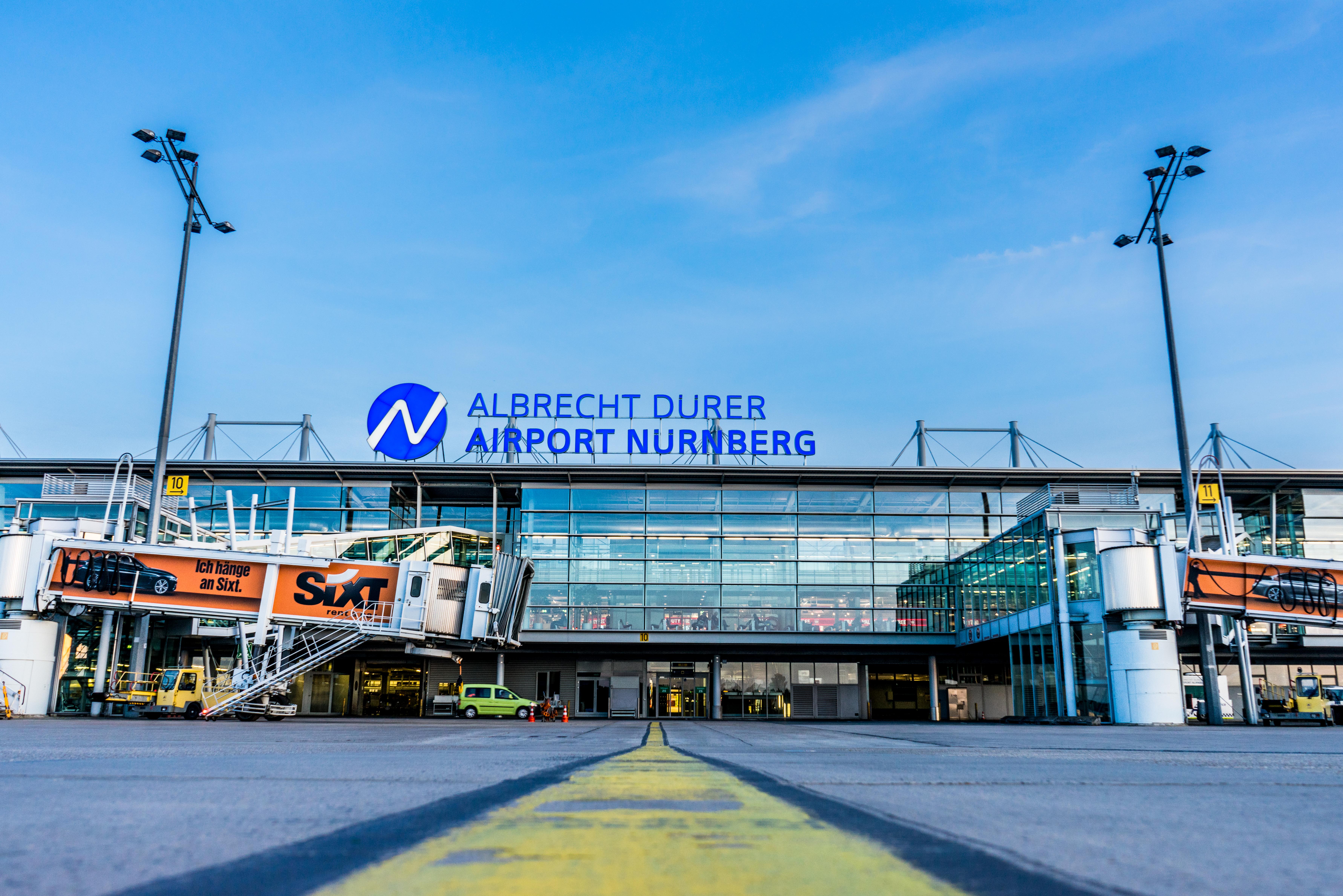
How significantly has NUE been affected by the pandemic?
Overall, we are in line with the massive decrease of traffic figures compared to the average at German airports (-83.2% in October 2020). The pandemic has massively affected the segment of full service carriers (hub feeding) in Nuremberg (NUE). Due to the business-oriented demand in our region, NUE was really strong in this segment before the crisis.
Nevertheless, this change can be an advantage for new players in our market after the crisis—especially when it comes to a change in (corporate) customer behaviour as well. For example, one big question mark for us is whether Lufthansa will be able to defend its strong market position in Nuremberg, with high frequency hub feeding to Frankfurt (FRA), Munich (MUC), Zurich (ZRH) and Vienna (VIE)).
Besides that, there is an environmental discussion ongoing regarding the sustainability of very short feeder flights within Germany.
What are the impacts for NUE in times of lower competition in FRA/MUC?
In the past five years, we have defined our market as the "blue ocean: due to the significantly lower level of direct and indirect competition here in Nuremberg. Undoubtedly, there is a question mark as to whether FRA and MUC will remain “red oceans”—markets with bloody competition—after the crisis.
One strong indication for this thesis of FRA and MUC remaining red oceans is that Lufthansa will defend its hub structure at both airports. Hence, there is an argument for flying to Nuremberg for carriers not associated with the LH group.
Lufthansa will also put more capacity into the medium-haul leisure market. These capacities are currently not needed as feeder capacities, therefore the competition in this market will increase significantly for all other players. These players would fit to our airport and local demand.
Not only taking into account the level of competition, our mission is to always demonstrate the sustainable and untapped market demand of our region to our customers.
What incentives/policies have you implemented to drive recovery?
As a midsize airport, we have to immediately get back on our feet after the crisis. This is a massive challenge and, at the same time, an opportunity to redefine ourselves.
We launched a task force in March to redefine the structure of our charges and incentives. As a quick result, we brought the Blue Ocean Lifeline as a transition incentive into the market. The main reason was to avoid the fixed-cost trap for our customers during the volatile summer and winter season.
From next summer schedule onwards, we will charge our airline customers in a revolutionary way for us. This is not a simple cost distribution approach anymore, but we will have a use-based charge structure with significantly lower complexity. In the future, airlines will only pay for the infrastructure which they actually use. Efficiency and less complexity becomes more important at the same time.
Simultaneously, our official incentive scheme will be significantly advanced. New components beside the new route incentives are based on volume and environmental aspects.
We have received really positive feedback for this revolutionary approach from nearly all of our customers so far.
How is the regional/national government supporting you?
Resulting from the German aviation summit, we see a €500 million package from the federal government to support the airports for their provision of infrastructure during the first lockdown period (from March to June) this year. We are engaging with our local stakeholders in a task force to create market evidence for the upcoming recovery from summer 2021 onwards.
Which key routes are you focusing on in 2021 and beyond?
Based on our experiences in summer 2020, we expect a really fast and strong recovery in the VFR and leisure segment. We see significant additional demand in the VFR segment, especially to Italy, Greece and Eastern Europe and we are discussing potential routes with relevant carriers already.
In general, LCCs were underrepresented in NUE before COVID-19 hit us. Increasing the share of this market segment will still be a strategic mission for us.
How important is testing to the rebuild of the industry in Europe?
Undoubtedly, testing is important to create and to establish customer trust. Nevertheless, there are massive operational challenges to scale up testing if it comes to regular operation. Our hope is to achieve herd immunity in Germany and Europe through vaccination by mid 2021. There are indications that this could be achievable.
What else needs to happen to speed the recovery and drive demand?
From our point of view, market evidence becomes the key decision factor for rebuilding and opening routes (besides incentive and support mechanisms) within the next 12 to 18 months. The challenge will be to demonstrate to airlines a risk-minimized scenario for each individual market and route.
Hence, we have analyzed a number of strong indicators for extra and unserved demand from and to NUE. We are happy to discuss the outcomes in more detail with relevant airlines any time.
Photo credit: Nuremberg Airport/Ralf Lang
